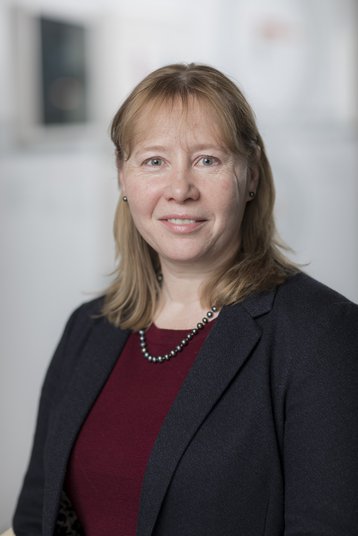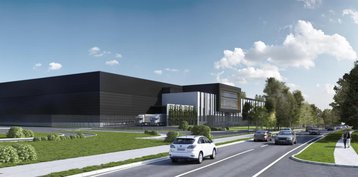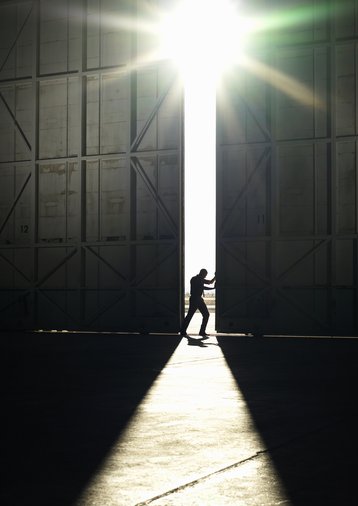You’d be excused for thinking that the world has enough hyperscale builder/operators.
Companies like Vantage, Stack, PDG, and the wholesale arms of Equinix and Digital Realty have been doing this for some time, and there’s a very small list of customers wanting multiple megawatts of capacity built to order.
Pure DC, whose website says it specializes in “designing, building, and operating hyperscale data centers, anywhere in the world, to the highest industry standards,” runs the risk of sounding like more of the same. After all, there are only so many ways you can describe the job of building, powering, and cooling a large secure warehouse full of IT.
This feature appeared in the latest issue of the DCD Magazine. Read it for free today.
But one thing about Pure stands out: its CEO, Dame Dawn Childs.
Engineer and a Dame
She may well be the only female CEO in the wholesale data center niche. More importantly, she’s one of the only serious engineers in a set of CEOs that mostly arrived in data centers from real estate - having served in various settings including the Royal Air Force (RAF).
She is also surely unique among data center CEOs, in being a Dame of the British Empire.
For those not familiar with the British honors system, a Dame is the female equivalent to a male Knight, awarded for services to society in one form or another.
Many famous Dames are actors like Judi Dench. A small number of previous tech Dames includes Dame Wendy Hall, professor of computing at Southampton University who co-founded the Web Sciences Institute alongside Sir Tim Berners-Lee, and Dame Stephanie “Steve” Shirley, who founded F International to create opportunities for female programmers.
Dame Dawn’s engineering strengths are clear. In the RAF she gained a mechanical engineering degree and Master's degrees in defense studies and defense administration. She was the RAF’s first Senior Engineering Officer.
After 23 years’ service, she went into civilian airspace, to become the first female head of engineering at a major international airport (Gatwick) in 2012.
From there she went to the entertainment company Merlin in 2016, establishing a central engineering function for rides and attractions at its theme parks, and then in 2019 went to the National Grid to be UK Change Director.
In 2021, she joined Pure DC, becoming CEO in August 2021.
Military and grid experience
“I was moving my way up through my career, and I was wanting to get a more board-level, strategic role,” she remembers. “And I had some great advice which was that, as an engineer, to be worthy of being on a board I would need to be in a technical industry.”
At the time at Merlin: “With 130 theme parks around the world it was a big crunchy job, but I was deemed to be able to be on the board because it was an entertainment industry. Engineers were more of a commodity.”
At the National Grid, engineers got more status, and even more so at Pure, she says.
Working on mission-critical systems in the RAF and Gatwick, and then on changing the UK’s National Grid, added up to exactly the right set of skills to bring to the data center industry, but that was a coincidence.
“If I was preparing myself for a career in the data industry, in a bizarre way, I have done it without knowing it,” she says. “When I joined the data center industry, I didn't even know what it was, to be candid. But upon discovering the data center industry, I realized that the journey that I've taken in my career has actually set me up for it by happenstance.
“I consider myself to be very lucky,” she says. “I have critical national infrastructure experience, I have 24/7 operational experience, and I have good technical experience in operations that are akin to data centers, so it has really set me up well.”
Aiming for hyperscalers
Like other players, Pure is backed by private equity. In Pure’s case, it’s from Oaktree Capital Management.
“We're very fortunate to have really great investors who are supportive,” says Childs.
Pure is based in London, and currently builds data centers in the UK and APAC: “We're still a growing business, so whilst we may not compare to some of the other businesses in the sector who've already grown, I think that our growth trajectory is exciting,” she says.
“I think what stands out from the rest is we're racing up the outside of the field,” she says. ”Pure is a small startup, going back a few years, but it has scaled up pretty quickly.”
When she started in June 2021, there were a handful of people: “They had a couple of hyperscale customers and a couple of locations.
“I was brought in to set up the operational arm of the business, ahead of the first operational go-live at our data center in London. Then after probably eight months or so, I took over construction as well.”
Pure DC’s origins go back to Martin Lynch, founder of the London data center operator Infinity SDC, which was recently acquired by Green Mountain. In 2013, Lynch left Infinity to start Pure, remaining as a director until April 2023, having passed on the leadership.
Since 2016, Pure has been chaired by Simon Berrill, an investment banker with ten years at Macquarie Capital.
Pure’s first project was developing and managing a small Birmingham data center owned by GTP3, which opened with a 1.5MW data hall. After the project was completed, Pure handed it over and focussed on bigger hyperscale projects.
“We do have other customers,” says Childs, “but 5MW is the smallest parcel of capacity that we would prefer to deal with. We build, and run the operations including power and cooling. We're effectively the landlords of the facility, giving our customers the service they require to operate their facilities within the data halls."
Pure set out with Panattoni as a partner to build a three-story, 50MW data center on the site of MGM’s Elstree Studio in Borehamwood. Pure DC dropped that when it hit planning delays, shifting its attention (and the electricity supply it had ordered) to a second development it was working on, in Cricklewood, near Staples Corner.
Borehamwood became a logistics site, and Cricklewood opened as LON1 in 2022. Its first phases are operational and there are plans for 150MW of power there.
Meanwhile, Pure has been developing a Dublin site with the first building due to go live this year. Partners have bought adjacent land, so it could grow beyond the current plan for three buildings, Pure says.
“In May this year I stepped up as their CEO to take over all of the group's business,” says Childs.
Since then the company has opened its first international site, a 20MW hyperscale facility in Jakarta, Indonesia - its first in APAC.
That was a learning experience, she says: “Building out in Indonesia through Covid was challenging, it had a worse lockdown than we did here in the UK. Construction actually stopped four times over there. That was problematic.”
Building abroad with a UK headquarters “requires close focus, and it requires ensuring that you maintain the standards that are right for you as a business operating anywhere in the world. It can sometimes be quite challenging to enforce and maintain those standards in other markets. That made it slightly more difficult and less straightforward than building a data center in the UK.
“But there are other aspects that make it easier. Getting a good workforce out there is not easy, but once you've got them they're far more compliant than the UK might be. You must get some trusted partners out there. There's pros and cons of doing business anywhere - it's just being aware of what they are, making the most of the great things about doing business in those geographies, and guarding against the slightly more challenging aspects.”
The company has ambitions in the Gulf states, says Childs. “We have a team out in Abu Dhabi and a data center in construction there.”
Pure has some financial backing from the Emirate of Ras al Khaimah, and has built on spec in Abu Dhabi - where a 50MW building has reached weathertight status.
As to the future, she won’t make any concrete promises, but Pure is looking at expanding into the European mainland, as “getting some foothold there would be one of our next key steps as well as growing at scale where we already have footholds.”
Despite the number of players there, now could be a good time to enter mainland European data centers, as new efficiency regulations are being launched: “That gives us a slight advantage because we don't have entrenched ways of working - processes, methodologies, and design sets. We can very agilely just lean into whatever is required or demanded and hopefully get ahead of that game.”
But it won’t be done in a rush: “I think the important piece is that we will be very much customer-led. We don't intend to go off to somewhere completely new and make a stand and go ‘You should come here!’.”
Distinctions
Wholesale data centers are a big market, but it’s one where a small number of players chase an even smaller number of giant clients to offer a product which seems pretty standard - large powered warehouse buildings to hold IT equipment.
In that situation, competition over margins can be tight.
“In any industry, margins are important, particularly when there are multiple providers for a select few customers,” she agrees.
“And yet we're definitely not just running around trying to be the cheapest for everything because that's not going to be a good outcome for anybody. I saw it in the aviation sector: ground handlers were always cheapest, cheapest, cheapest. Then there was an issue, and they'd start all over again and go back up to the top.
“That's the sort of race to the bottom, which we are not participating in. We're participating in being an industry player because we're good at solving problems and good at working with our customers to get them where they need to be.”
On top of price, there’s efficiency, and delivering the required quality, she says. “These days the industry is constrained on many levels,” she says. “It isn't just about price or service. It's about the ability to be able to go somewhere where resources are constrained - being able to build data centers in locations that other people aren't able to.”
She takes the example of supply chains. Many complained about the difficulty of getting equipment like generators and chillers during Covid. But there are two sides to those complaints, she says: “It was an issue for everybody - but those talking about bottlenecks had their own supply chains and issues. I think we're getting to the other end of the supply chain issues now - and some of our competitors and suppliers have done a better job than others.”
She thinks a well-organized company is less likely to hit such an issue: “It's important to work better with your supply chain so they understand the demand. So you make sure we give them steady demand rather than randomly going, ‘Hey, I need another 20 generators tomorrow.’ That's never gonna work.”
The sector is unusual, she says, because: “It is critical national infrastructure, hugely important to every aspect of modern-day life, and yet it's not regulated. It's not currently considered in many countries as critical national infrastructure, but actually, it completely is.”
The challenges include power and land available for large-scale building: “To achieve planning, or even to find power in this constrained environment is very important. Our challenges are multifaceted, and yet we have to be a competitive business.”
She looks at those facets like a dragonfly, she says, with “multiple lenses.”
One of those lenses is the staff: “I think the power of any business is people. We have gathered a fantastic group, and we have a beautiful blend of thoroughbred data center expertise, and brilliant expertise from other industries, such as critical national infrastructure industries, aviation, and the power sector.
“We've gathered a great team of experts, and that places us really well to solve some of these complex challenges. I think that's what gives us our edge.”
Sustainability is essential
Another lens to look through is sustainability: “In ensuring that the data centers you're building are sustainable - and becoming more sustainable - your designs have to move ahead of the times.”
Pure is “really thinking about what we can do to reduce the resources needed - not just building the data center to meet the capacity demand, but doing it in a way that is sustainable, from a delivery perspective and more importantly from the planet’s perspective, and from the consumer’s perspective.”
Customers ”don't want to look at a data center and worry about the power it's using. They want to feel that it's being done in a sustainable way. You have renewable power, and you've minimized the amount of materials being used in the construction process.”
She goes on: “We're having to find better solutions, better ways of optimizing data centers. Not only have you got the heat load in the data center itself increasing, you've also got climate change, affecting the climate around the data center.”
How strong is that commitment to sustainability, we ask: Would Pure build a data center in a geography where no renewable energy is available?
“It's a bit of a hypothetical question, but it depends on the full suite of considerations, if we were able to find a renewable power source or build our own renewable power source.
“There are ways to get into any market and to ensure that you are sustainable, but it all depends on the nature of the customer requirement. The nature of the land parcel you find, and also the longevity of what you need.”
There could be ways to get low-carbon power: ”You can always build your own power center, you can create your own microgrid,” she says. “That would depend on the customer, the land you managed to acquire and whether you could create your own renewable energy source,” she says.
“Small, modular nuclear is becoming a thing, isn't it? And that's potentially a low-carbon source of energy if contained in the right way with the right risk solutions around it.”
She’s not expecting nuclear-powered data centers any time soon, but she will be ready: “It depends on how far we get with the availability of product on the market, and figuring out the risk and operational analysis around it. But if you're anyone that's ex-military, we’ve had nuclear power in submarines forever. It's not like it's demanding or challenging. You just need to have the right operational frameworks around it.”
She also points out that decarbonizing is more than just using renewable energy: “By far the most significant thing in terms of making data centers carbon neutral is the embodied carbon.”
There are limits to how much you can offset all of the carbon and resources used in building a facility, “so minimizing input is going to be important.”
She’s skeptical about the high profile some providers give to decarbonizing their backup generation: “If you're in a very steady supply market for power, then your backup shouldn't be coming into play that frequently. It's not the most important thing to fixate on. There are other clever things that you could do to make things far less carbon intense.”
Pure already operates its backup with HVO (hydrogenated vegetable oil) instead of diesel, but didn’t trumpet it with a press release: “We're not on diesel generators, we're using far more sustainable fuels already for any backup power that we have. Those are the small steps to make - but figuring out that front end and getting the build more sustainable has got to be one of the biggest things that we need to focus on.”
Having said that, don’t expect a wooden data center from Pure immediately: “We have a team within Pure who focused on R&D, and they are very focused on figuring out the best, most sustainable types of materials that can be used, and there are loads of exciting advances. But oftentimes, they're not scalable yet. They might look enticing on their own and have the same structural qualities as steel, but they can't yet be manufactured on the scale that's needed.
“We have lots of materials under investigation and when the appropriate project comes along, where we can deploy these materials, then we absolutely will,” she says. “Ensuring that it has the right level of industrialization or availability to make it a meaningful substance to use in a data center is quite important. Oftentimes, it's not the lack of potential alternative choices out there. It's the lack of credible ones.”
Engineer-led
Being led by an engineer is another distinction: “Having an engineer as a CEO is completely acceptable because a lot of the problems that we now face are not just commercial problems, but technical problems.”
At a senior level, both commercial and technical ability is necessary, she says: “Can an engineer learn sufficient commercial things to make them a compelling leader in this sort of sector? Or can a commercial person learn sufficient technical things to enable them to navigate it? I think either works.”
On one level, she covers both bases, with a lot of commercial experience: “Some of the big pieces that slot into my current role are all around strategic decision making,” she says, and she picked that up at Gatwick Airport, National Grid, and Merlin.
“At the National Grid, I led the transformation to get the organization leaner, get it onto a better commercial footing for new regulations, and made a couple of billion pounds worth of savings. I think that sets you up to ask the right commercial questions. “
But commercial challenges aren’t the fundamental issue, she says: “The whole global financial landscape is changing as we speak, with interest rates and inflation through the roof, and margins squeezed everywhere. But actually, a lot of the bigger problems to solve are technical problems.”
One of those technical problems is cooling: “If you're in the right climate you can have some sort of free cooling, but sometimes it might be too hot outside to enable that. All of these problems need technical solutions. Literally, every single problem that you can think of that's constraining our sector at the moment, comes back to a technical solution of some kind. It is very rarely a commercial solution.”
That’s the place to start, she says: “Knowing how to ask the right questions of the technical experts that are gathered around you, is a great skillset to have.”
Does she ever step back and ask whether the industry should be meeting this demand in the first place? Are all these data centers needed?
“That's a that's a far, far bigger question,” she says. And as an industry, I think it's probably up to us to offer some solutions for that too. Supporting hospitals in real-time, rather than just spreading spam videos, and reply-all emails that really don't need to be kept for 1,000 years.
“There are lots of ways that that data demand could be constrained to allow supported growth,” she says. “At some point, regulators or industry will have to face the data junk element, and there should be a solution for that.
“However, as a data center provider, we can't solve the data requirements piece. What we can do is make building data centers far more sustainable. That's a stepping stone ahead of any regulation on good data versus bad data. We need to make data centers as sustainable as they possibly can be.”
A business for women
“Bizarrely, being a woman in the data center industry, I've had two sides to this experience,” she says. “When I first joined the sector. I found it hugely welcoming. As a female engineer, in the majority of other roles that I've been in, it hasn't really felt that way.”
Part of that has been down to groups like the iMasons IM Women, she says: “I think a couple of key groups like IM Women are doing a great job, in terms of connecting women together and making sure that we have a soft landing in the industry.
“However, as an industry, we're not really advanced enough in our diversity and inclusion. So from that perspective, it almost felt like we were quite a way behind places like the aviation sector, and other areas where I've worked. It just felt like we weren't advanced enough in our thinking around diversity and inclusion.”
One issue that affects women is “Impostor Syndrome,” where a person is held back by doubts about their abilities feels and the feeling that they are a fraud.
Childs has written widely about overcoming that issue: “Over my career, it's taken quite a long time to feel that I have the credibility that should make people listen to what I've got to say. That's been quite a long fight as a female in an engineering position, but I think I solved that about a decade ago. I felt I made that transition where I had sufficient experience and confidence to be happy with what I was saying, and feel that people should listen to me.”
She has been President of the UK’s Women's Engineering Society for five years, and says “If you're a young woman coming into any industry, and particularly as an engineer, you look at people who are in more senior positions and you think, ‘Oh, my goodness, do they know what they're talking about? And I don't!’”
Even now, she says: “I feel like I have good experience now, good credibility, and good knowledge. But that doesn't mean that I come into work every day and think, ‘oh, yeah, I've got this. I know exactly what I'm doing.’ If ever you get to that stage, then you're probably not trying hard enough.”
To an extent, an awareness of your limitations is important: “You should never be too comfortable and complacent in a role. You should always be endeavoring, questioning, listening to other people. It's pointless surrounding yourself with teams of fantastic people and experts if the only voice you want to listen to is your own.
That’s important, she says: “If you think you have the answers to everything, you're probably slightly delusional. You need everybody's mind in the room. Because if you don't have everybody's mind in the room, then you're not going to be solving the most complex problems. There's always going to be somebody else who's got a slightly different viewpoint. you should never ever be so opinionated and so competent, that you're you're shutting yourself off to having that input from everybody.”
Making the industry visible
That is the reason why she sees broadening the data center workforce as a mission: “The first premise of inclusion is you need diversity in your business. It's to get all of those different experiences and minds in the room, to help you to solve the most complex problems, to help you to be innovative.
“The biggest thing for me around having an open and inclusive culture in your business is to make sure that you get all the minds in the room and to get all of those voices out there.”
Recruitment needs to change, she says: “I think there's something that happens in this industry, where the default position for going out to market to find new talent is to look for extra years of experience in data centers.
“If you're forever going out to market saying ‘you need to have been in data centers to come and work in data centers,’ then you're never going to get a more diverse workforce. You're only ever going to get an older version of the workforce you've already got. They might be more experienced, but they won't have any new insights. You're closing yourself out, you're being incredibly non-inclusive, and you will never be more diverse than you are now.”
Experienced data center professionals are still needed, of course, she says: “But you need to have some new ideas coming in as well, to get to those best outcomes. I'm always trying to find that nice balance in our workforce where we have lots of great data-centric expertise, but also some of that fresh thinking.”
As chair of iMasons diversity and inclusion committee, she’s looking for new ideas: “I'm working with colleagues from across the industry and globally, to think about how we improve diversity inclusion, across our industry across the entire sector to get that new talent in. There's the ever-burgeoning demand for data centers, so we need to have more talent coming into this industry. And if you're only going to use the talent that's already here, you're not going to meet that skills gap.”
She wants advertising that gets the language right, and increases knowledge and awareness of the data center sector. If an engineer as well-qualified as her was not aware of the data center industry, then there’s clearly some work to be done: “As an industry, we need to get better at that - and I'm going to help in that regard.”
If she asked school and college students what a data center is, she says, “more than half wouldn't be able to tell me.”
Pure has been holding open days at its LON1 facility: “We just had our first open day for schools to come to our site in London. We also had an armed forces Open Day. We had the veterans community in the UK come in and we did a learning session about what the data center sector is and how you get into it. Getting that educational piece out there so that the industry as a whole can benefit is so important.”
Of course, to get different people in, the sector will have to talk differently. “There was a study done by the Institute of Mechanical Engineering in the UK, called the Five Tribes Study, and it found that a lot of outreach activity to engage school kids into engineering was all landing with the people who were already interested in it - the kid who was taking the Hoover apart or building a Meccano car.
“To get more girls interested, you had to talk about the purpose. During the pandemic, girls have really seen how being a scientist, being technical, can solve problems like getting the ventilators designed.
"Those are life-changing pieces of engineering and it’s a life-changing technical skill set. All of a sudden, the purpose is far more evident, particularly for girls.”
A Data Dame
Being a Dame hasn’t changed things for her, she says: “I don't think I don't think being a Dame changes how people respond to you, but it's definitely welcome.”
She featured in the King Charles’ first Honours List, in January 2023: “It was a complete surprise, and I still have no idea who put the nomination together, which I think is quite nice. I assumed it was my colleagues in the Women's Engineering Society, or maybe one of the other charities that I support, but it was none of those.”
She expands: “I think the bit that I was most pleased about was that it was for services to engineering, rather than services to diversity in engineering. It looks at my engineering career, rather than just my charity work. That was particularly pleasing.”
She collected the award from Anne the Princess Royal. Like many, she sees the Princess Royal as “hardworking, and a bit of a role model herself.”
They also had sport in common: Princess Anne was an Olympic horsewoman, while Dame Dawn once led the RAF team to victory over the Navy and the Army, in the Inter-Services Challenge Cup.
She’s amused by one thing about the award which many would see as sexist: “There is a bit of a quirk in the honor system. If I was a Sir, then my wife would be a Lady. But as I'm a dame, my husband doesn't get any title. I like to think that that's because if you're a guy and you get a knighthood, your partner has clearly had to support you in getting that knighthood.
“Whereas if you're a lady and you become a Dame, you've probably had to do it on your own.”










